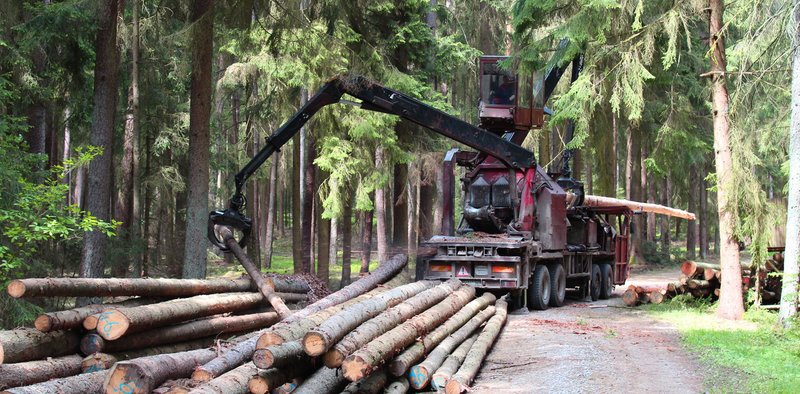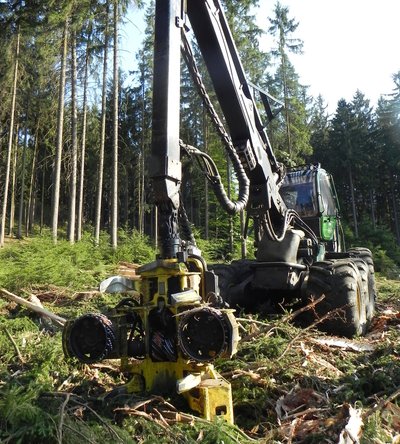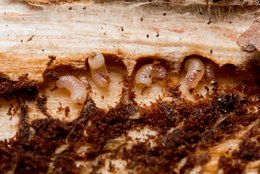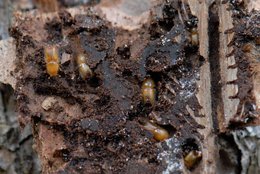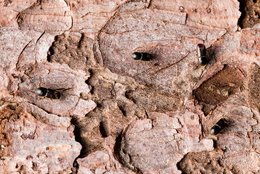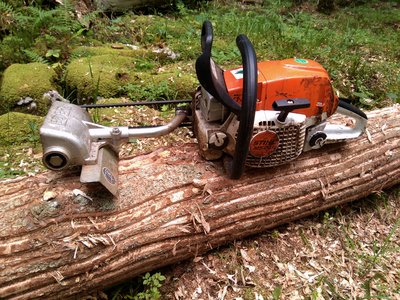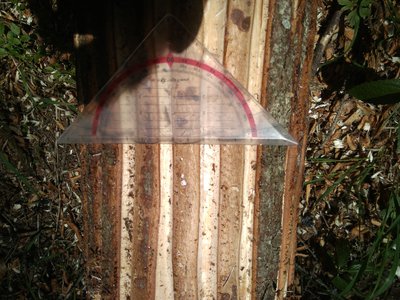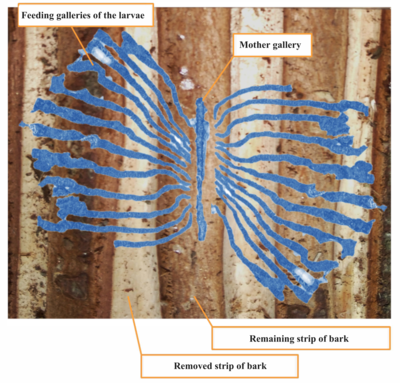Preventive debarking
On the one hand, debarking can be carried out as a precaution - i.e. uninfested wood can be debarked so that it cannot be colonised by bark beetles. On the other hand, the debarking of infested wood can also be an effective means of protecting the forest - but only as long as the broods are still at the white stage (larvae/pupae), because the further development of the larvae and pupae is prevented by the increased drying out of the bark, and they consequently die.
"Debarking heads"
“Debarking heads” are harvester heads with a debarking function. Their effectiveness for forest protection is like the “classical” debarking described above - i.e. it works as long as the broods under the bark are still at the white stage. However, it is different for young beetles that have developed completely and old beetles: if they are not crushed or at least damaged by the rollers of the harvester head or during debarking, they can fly out unhindered after debarking and cause a new infestation.
The LWF recommends the use of “debarking heads” for bark beetle control exclusively as a preventive measure for the debarking of uninfested spruce and for the processing of freshly infested spruce (bore dust, resin droplets, white larval stages, no young or old beetles). In the course of processing the timber, the development of the brood under the bark must therefore be continuously monitored.
Manual debarking
Various attachments for the chainsaw are available for the manual debarking of small quantities of timber. Chainsaw attachments with strip peelers remove the bark lengthwise in a milling process called "strip-peeling". When used correctly, "strip peeling" deprives spruce bark beetles of their breeding habitat, but at the same time preserves the habitat of many other insects that are dependent on the tree bark, as the bark is not completely removed, but only peeled off in strips.
The key to being effective in the fight against spruce bark beetles is to cut right through the bark to the wood body when strip-peeling with the chainsaw attachment. In the case of thicker wood with thick bark, several processing steps may be necessary. The logs must also be turned several times during the debarking process, so that all the bark on the trunk can be milled.
It is not as yet possible to judge how effective this technique is in terms of forest protection in the case of already infested trees and once the beetles have reached the brown stages; the relevant studies are underway. It is conceivable that even fully developed bark beetles may be damaged or destroyed by the strip-peeling. The question is, however, how many beetles can nevertheless mature and fly out to infest more trees.
The approach is fundamentally promising, however, as the method can be applied directly after felling, which saves valuable time - especially when the logistic chains for logging and timber removal are under pressure anyway. This is especially true in small private forests where the quantities of damaged timber are small - and also in protection forests, where it can be advantageous for biodiversity and forest regeneration to keep the wood in the stand.
When slashing the trunk wood, however, it is important to remember that residues such as the crown wood must also be processed to protect the forest.

